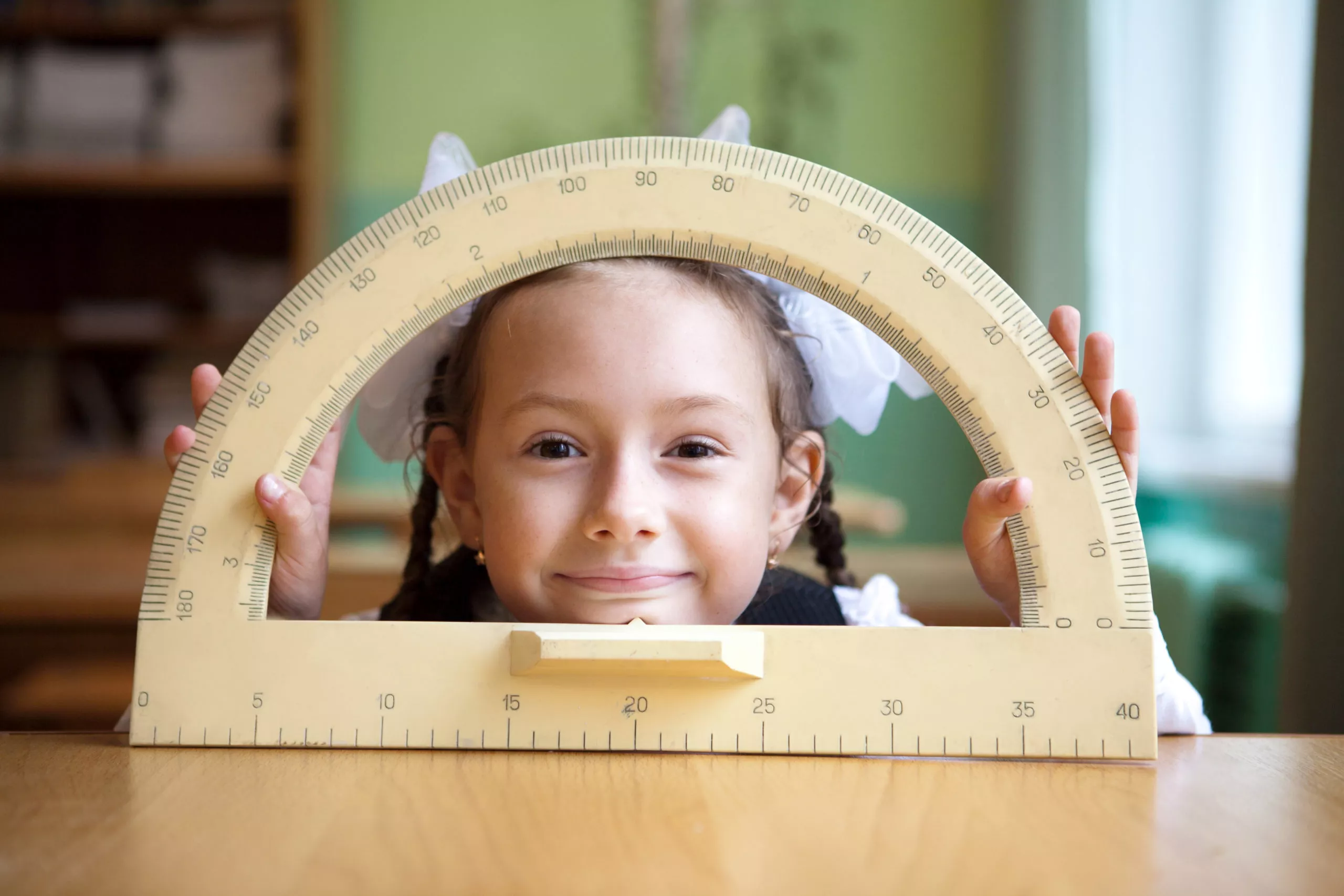Myopia is an eye disease with increasing prevalence, particularly in children. To help bring clarity to what myopia is and what it may mean for your child’s vision health, we’ve rounded up five myths versus facts you need to know.
Myth: It’s only nearsightedness, and not something to be concerned with.
Fact: Myopia is an epidemic. Pediatric-onset myopia (childhood onset myopia) is a major and growing threat to good ocular (eye) health in children around the world.
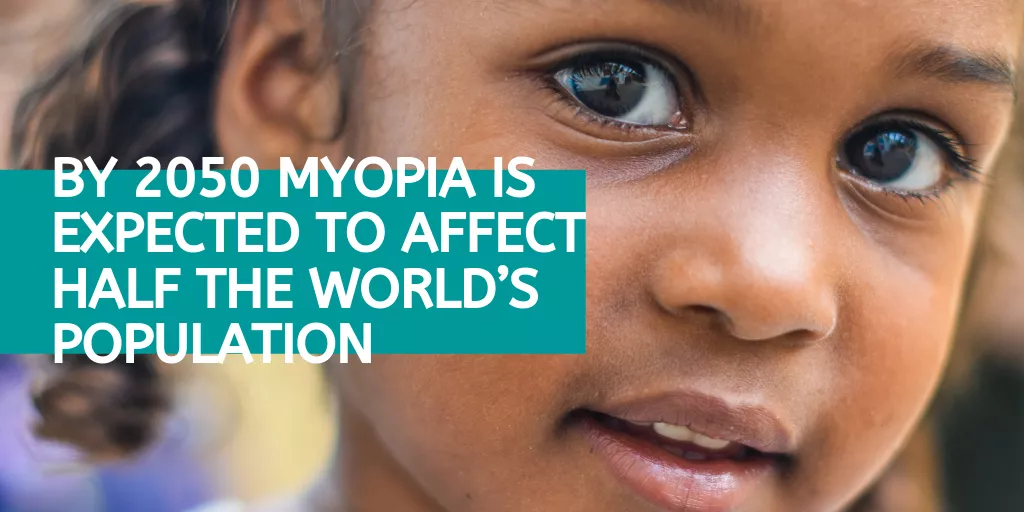
Myopia is the most common ocular disease which is a contributing factor as to why the condition is often normalized, or seen as typical, in child development. Myopia results from abnormal axial elongation, meaning the elongating of the eyeball, which leads to a refractive error, blurring objects viewed at a distance.
A report from the World Health Organization stated that the prevalence of myopia and high myopia are increasing globally at an alarming rate, with significant increases in the risks for vision impairment. By 2020, The World Health Organization (WHO) projects 2.5 billion will be myopic, and by 2050 myopia is expected to affect half the world’s population.1
Myth: There is no way to know whether my child will be myopic.
Fact: There are hereditary and environmental factors that are associated with the development of myopia.
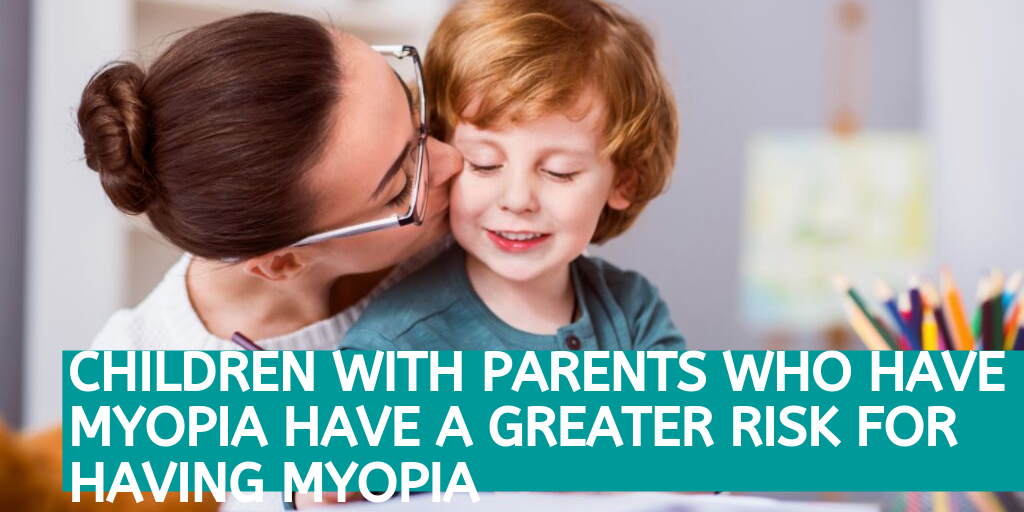
While the root cause of pediatric myopia is unknown, multiple risk factors may contribute to its development and progression.2 These factors can include family history, excessive time spent doing close work such as reading or working at a computer, and limited exposure to sunlight.
Children with myopic parents have a greater risk of becoming myopic themselves.3 In fact, there is a 25% chance that a child will develop myopia if one parent is myopic. That number jumps to 50% if both are myopic.
Spending long hours looking at a computer/phone/tablet screen, reading, and doing close work are examples of activities that stress the eyes and may also cause or worsen nearsightedness. The American Academy of Pediatrics recommends decreasing screen time and increasing time outdoors. According to the journal of the American Academy of Ophthalmology, spending time outdoors—especially in early childhood—can slow the progression of nearsightedness. In fact, increased time outdoors in children decreases the risk of new myopia onset by 50% and can slow myopia progression.4 5
Myth: Myopia is a harmless condition.
Fact: Myopia can lead to other serious eye diseases.

Myopia in children can often progress and lead to complications later in life. An eye is considered to have high myopia if it requires -6.0 diopters or more of lens correction. People with high myopia have an increased risk of glaucoma, cataracts, retinopathy, retinal detachment, and loss of visual acuity – eye conditions that are usually costly to treat.6 High myopia also reduces the possibility of being a candidate for refractive surgeries such as LASIK and increases the risk for complications from these treatments. Any level of undiagnosed myopia can be considered a risk factor for other diseases and/or conditions which may be controlled with proper treatment.7
Myth: Glasses are good enough for my child who has myopia.
Fact: Glasses are not the answer to myopia; they correct vision but don’t do anything to modify the underlying disease.
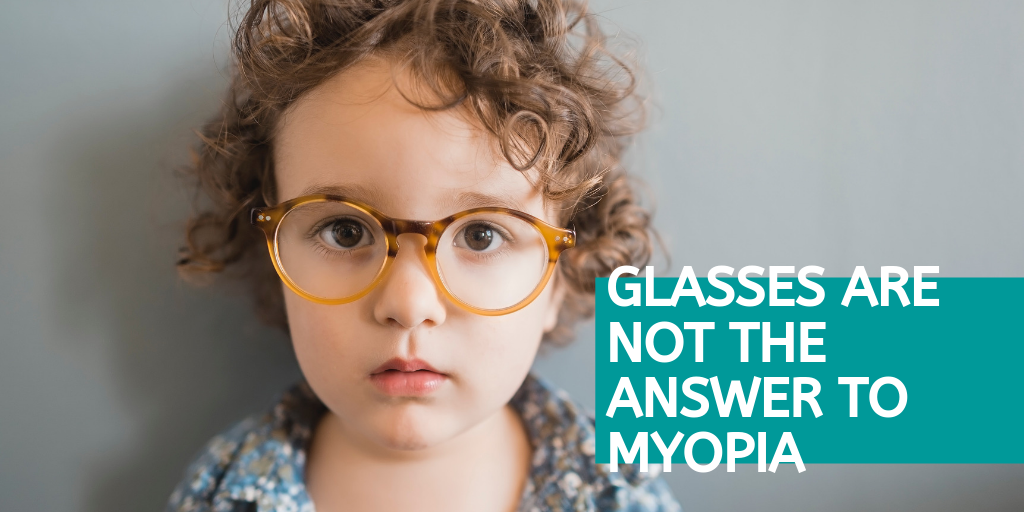
Myopia is a diagnosed health condition, and the diagnosis and treatment of myopia is more than just “needing glasses”.8 Conventional glasses and contact lenses can help children to see more clearly, but they do not slow down the progression of myopia.9 This means that as children grow, their myopia may progress, require stronger prescriptions, and risk becoming high myopic.
As an example, if there was a leak in your home, you would do more than just place a bucket underneath the leak. You would get to the heart of the issue to prevent further damage and address the problem at its source.
Myth: “If my child suffers from myopia, I can’t do anything to slow its progression.”
Fact: There are a number of ways to help slow the progression of myopia.
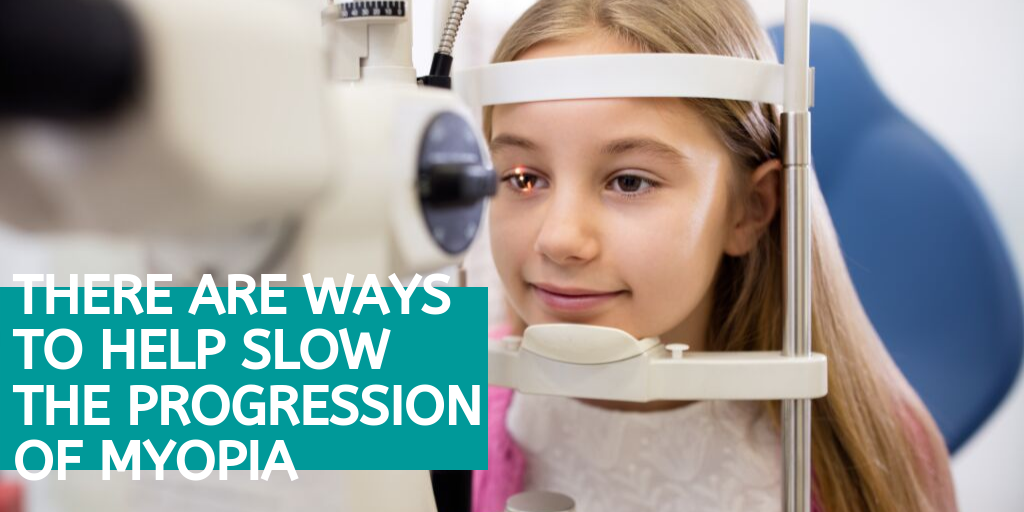
There are a few approaches to slow down the progression of myopia.
The easiest solution and something you can do today is increasing time outdoors, and limit screen time. Increasing exposure to daylight and lower light intensity can help delay the onset and decrease myopia progression.10 Research suggests that sunlight and UV rays help promote healthy eye growth and therefore lower the chances of nearsightedness in children.11
When doing close work, such as working at a computer or looking at a cell phone, eye strain can occur and harm children’s visual development. Encouraging better habits such as taking frequent breaks to focus on objects farther away can help. The America Optometric Association shares one eye exercise known as the 20-20-20 rule, where they encourage taking a 20-second break to view something 20 feet away every 20 minutes.12
Other options to slow myopia progression are being used today and include:
- Orthokeratology (Ortho-K) a form of custom-fitted, gas-permeable hard contact lenses that are worn overnight to reshape the surface of the eye and correct vision during sleep.
- Soft multifocal contact lenses, which are daytime lenses that are designed to improve vision for distance and seeing clearly up close.
- Pharmacologic interventions are in development but are not currently approved.
In summary, it’s important to familiarize yourself with different myopia control methods so you and your family can speak with your eye doctor and decide what the best solutions are for your child’s eye health.
To keep up to date on the latest myopia management initiatives and learn more about myopia, subscribe below.
Tags: myopia, progressive myopia, what is myopia, myopia treatment, myth, fact, nearsightedness
